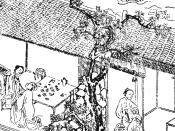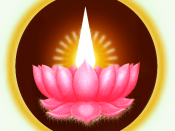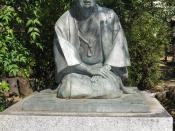The paradox of sexual representation of women, particularly in fictional works of erotic appeal, in pre-modern Japan and China is that the landmark representatives of such works tended to be wrapped around some sort of religious, metaphysical or philosophical framework. Though not necessarily always morally didactic and excessively cautionary, the sexual elements in these works tended to be underlined by a kind of secular wisdom, be it outlooks associated with the ?red dust? in Ming and Ching China or ?ukiyo? in Tokugawa Japan. Whether they are pornography masked under the guise of education for the young men?s own good ? one has to, after all, know evil in order to resist evil, or serious artistic produce distilled from the artists? own experience in the quarters of pleasure, a hotbed where human frailties and hypocrisy, the rise and decline of fortunes, the nature of relationships between men and women, the mirroring of norms and customs in a society, conflicting values and ?what makes people tick? ? in short, all the fundamental themes that literature seeks to explore, springs to life in glorious poetry and revolutionary narrative modes.
The women in these stories, regardless of the female archetypes they are often categorized under, like their various male counterparts, do come to gradual realizations of the ways of the world as their youth fades away and memories of the past become more intense in contrast to the loneliness of old age and the sadness of death, which is not surprising considering that both China and Japan have long literary traditions in linking sexual impulse with death, an aesthetic point which Yukio Mishima later in the twentieth century came to exemplify to an extreme. In that sense, literature replete with indecent women in the past differs from our concept of pornography today because the...


